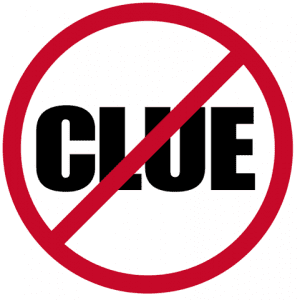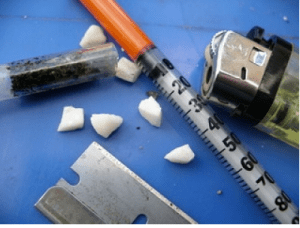 The med unit is responding to a report of a person down in a hotel room. While in route, dispatch notifies them that CPR is in progress. As they arrive a police officer meets them outside and tells them there now two victims and CPR is in progress on both. The officer further advises the scene is secure.
The med unit is responding to a report of a person down in a hotel room. While in route, dispatch notifies them that CPR is in progress. As they arrive a police officer meets them outside and tells them there now two victims and CPR is in progress on both. The officer further advises the scene is secure.
The paramedics enters the hotel and make their way down the corridor to the room where they see police officers have two elderly victims on the floor and CPR is in progress on both. It seems kind of odd to have two cardiac arrests in the same room at the same time, but the medics don’t question it. They just get down to the business of working the codes. But things are about to take a turn for the worse.
 An engine company was also dispatched to provide additional manpower to the scene. On a hunch, the company officer took a carbon monoxide monitor into the hotel. His intuition paid off. Six hundred parts-per-million is the reading. The cardiac arrest victims are immediately extricated from the environment. The police officers are now suffering the ill-effects of CO poisoning and have also become victims. Why didn’t the police officers or paramedics consider CO poisoning as a potential cause? There are several plausible explanations.
An engine company was also dispatched to provide additional manpower to the scene. On a hunch, the company officer took a carbon monoxide monitor into the hotel. His intuition paid off. Six hundred parts-per-million is the reading. The cardiac arrest victims are immediately extricated from the environment. The police officers are now suffering the ill-effects of CO poisoning and have also become victims. Why didn’t the police officers or paramedics consider CO poisoning as a potential cause? There are several plausible explanations.
Clue dismissal
 Sometimes there are clues and cues right in front of us that, after the fact, seem very obvious but as the incident was unfolding may not seem so. For example, why didn’t anyone question why there were two cardiac arrest patients in the same room? Doesn’t that seem odd? It did to the company officer, but not to the police or medics. Sometimes if clues don’t fit what you think is going on, you may dismiss them – sometime subconsciously.
Sometimes there are clues and cues right in front of us that, after the fact, seem very obvious but as the incident was unfolding may not seem so. For example, why didn’t anyone question why there were two cardiac arrest patients in the same room? Doesn’t that seem odd? It did to the company officer, but not to the police or medics. Sometimes if clues don’t fit what you think is going on, you may dismiss them – sometime subconsciously.
Task fixation
 The police officers and medics were focused on the task of saving lives. They had two cardiac arrest victims and it was an all-hands working event. Everyone’s attention was on saving the lives of those two elderly victims. Fixation on a task, especially a stressful task like CPR can cause a first responder to miss important clues and cues.
The police officers and medics were focused on the task of saving lives. They had two cardiac arrest victims and it was an all-hands working event. Everyone’s attention was on saving the lives of those two elderly victims. Fixation on a task, especially a stressful task like CPR can cause a first responder to miss important clues and cues.
Fixation on a task is like wearing blinders. You’re so focused on what you’re doing that you don’t pay attention to the other clues around you. If you’re a horse in a race, it may be good to not pay attention to other horses. If you’re a first responder at an emergency scene, blinders are not advised.
Desensitization
 As it turns out, this hotel was well-known to the police and medics because of the number of previous responses to the facility for drug-related emergencies. When responders respond numerous times to the same address for the same problem, they may start to assume each subsequent call will be just more of the same. When dispatched to a person down at the hotel, responders may have presumed it was another drug overdose because of the number of previous overdose calls they’d responded to at that address in the past.
As it turns out, this hotel was well-known to the police and medics because of the number of previous responses to the facility for drug-related emergencies. When responders respond numerous times to the same address for the same problem, they may start to assume each subsequent call will be just more of the same. When dispatched to a person down at the hotel, responders may have presumed it was another drug overdose because of the number of previous overdose calls they’d responded to at that address in the past.
Plausibility
How realistic is it that a hotel would have a significant carbon monoxide emergency and it would not set the detectors off? Quite plausible if there are no detectors. But hotels will have working CO detectors, right? Not necessarily. In this particular hotel, in this particular state, carbon monoxide detectors are not required for hotels and were not present. Nonetheless, the occurrence of CO poisonings in hotels are infrequent enough that it may have seemed implausible that it would be the cause.
Action oriented
 Even if the police and medics would have suspected a CO problem, would that have prevented them from entering the structure when they were met on their arrival by hotel staff screaming “THERE ARE TWO PEOPLE NOT BREATHING IN ROOM 101?!” Chances are, they would have still went in. On the outside chance the police or medics would have been equipped with CO monitors (which they weren’t) is it likely they would have used them? Odds are not in their favor. There are a few things that could have increased the chances they would have used a monitor if they had one. Those include:
Even if the police and medics would have suspected a CO problem, would that have prevented them from entering the structure when they were met on their arrival by hotel staff screaming “THERE ARE TWO PEOPLE NOT BREATHING IN ROOM 101?!” Chances are, they would have still went in. On the outside chance the police or medics would have been equipped with CO monitors (which they weren’t) is it likely they would have used them? Odds are not in their favor. There are a few things that could have increased the chances they would have used a monitor if they had one. Those include:
- A policy existed that required the use of a CO monitor on a multiple victim (indoor) incident… and… they followed the policy.
- They had other substantial clues and cues that tipped them off to CO as the problem.
- They had recently completed training on CO monitoring and the equipment and topic were fresh on their minds.
- They were aware of a recent incident involving CO poisoning and the possibility was, thus, on their mind.
The unstressed company officer
 The company officer who thought of CO and therefore decided to monitor the environment had a distinct advantage. He was not intimately involved in the patient care. He could, dare I say it, maintain a big-picture view of the incident. There was enough personnel working the codes that the company officer had the ability to access the bigger picture. Additionally, his cognitive capacity was not overloaded with a task (CPR). This gave him a distinct advantage.
The company officer who thought of CO and therefore decided to monitor the environment had a distinct advantage. He was not intimately involved in the patient care. He could, dare I say it, maintain a big-picture view of the incident. There was enough personnel working the codes that the company officer had the ability to access the bigger picture. Additionally, his cognitive capacity was not overloaded with a task (CPR). This gave him a distinct advantage.
If the company officer were not alert, he could have easily overlooked the CO problem as well. As it turns out, he’d not responded to the numerous drug overdoses at the hotel so he was not predisposed to prejudge the cause. The fact there were two cardiac arrests, at the same time, in the same room, flew big red flags for him. His intuition told him something was wrong.
The circumstances here were odd enough to get him wondering how it could be so. Absent all clues of fowl play and any indications of a double suicide, the company officer’s training and intuition kicked in. He recalled learning that CO in dwellings often affects all the inhabitants and multiple victims feeling ill at the same residence should always lead to ruling out CO poisoning. In fact, he actually recalled an episode of Rescue 9-1-1 where eleven people were sickened in a home from CO poisoning.
The civilian victims did not survive. But the first responders did. The police officers and EMS personnel owe their lives to a company officer with strong situational awareness.
Chief Gasaway’s Advice
 Never assume that the next call is routine or more of the same. There are way too many variables… in building construction, in fire behavior and in the nuances of human behavior to ever assume any call is routine.
Never assume that the next call is routine or more of the same. There are way too many variables… in building construction, in fire behavior and in the nuances of human behavior to ever assume any call is routine.
As you respond to a call, always ask yourself what you might be overlooking, especially if things just don’t seem to make sense or if the circumstances are novel (something you’ve never seen before). In the case of this call, it is not common to have two cardiac arrest patients that are not the result of trauma or violence. That should fly red flags.
This story speaks volumes to the need to have someone hands-off, performing the duties of the big picture incident commander. You may not think of an EMS call as the type of emergency that needs an incident commander. However, absent the non-task involved company officer, this incident might have had a very different, and more tragic, outcome.
Discussion questions
 1. Describe incidents you have responded to where you were caught off-guard or unsuspecting of what you found.
1. Describe incidents you have responded to where you were caught off-guard or unsuspecting of what you found.
2. What safeguards do you have in place to ensure an incident like this would not happen in your jurisdiction?
3. What could the police officers or medics have done differently that might have improved their safety?
________________________________________________________________
The mission of Situational Awareness Matters is simple: Help first responders see the bad things coming… in time to change the outcome.
Safety begins with SA! ________________________________________________________________
Post your answers to the discussion questions or share your comments on this article in the “Leave a Reply” box below. If you want to send me incident pictures, videos or have an idea you’d like me to research and write about, contact me. I really enjoy getting feedback and supportive messages from fellow first responders. It gives me the energy to work harder for you.
Thanks,
Email: Support@RichGasaway.com
Phone: 612-548-4424
Facebook: www.facebook.com/RichGasaway
Facebook Fan Page: www.facebook.com/SAMatters
LinkedIn: Rich Gasaway
Twitter: @RichGasaway
Twitter: @SAMatters
YouTube: RichGasaway1
YouTube: SAMattersTV
iTunes: SAMatters


Pingback: Episode 30: Brooklyn Park Fire Department Carbon Monoxide Close Call - Situational Awareness Matters!™